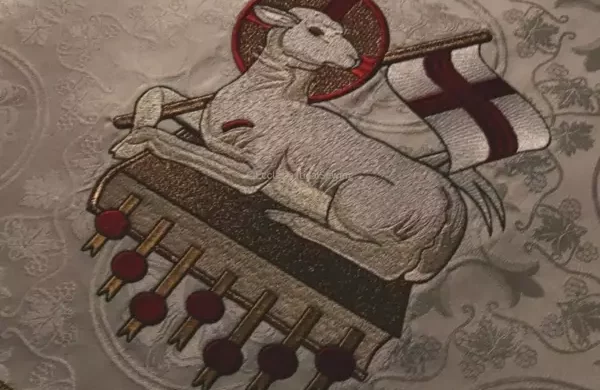
The transformation of ancient Rome from a pagan empire to a Christian civilization marks one of history’s most profound religious and cultural revolutions. From Jupiter’s temples to Christian churches, this journey reshaped Western civilization.
Like this:
Like Loading...

Discover how medieval cathedrals transformed into living Bibles, where stone and light tell the story of faith. From Florence’s magnificent dome to Paris’s golden mosaics, explore how sacred architecture became the Fifth Gospel—teaching divine truths through visual splendor. Journey through centuries of architectural evangelism where every arch, column, and stained-glass window preaches silent sermons to believers and non-believers alike
Like this:
Like Loading...

Revelation 3:10-11 offers a timeless message of faith and perseverance, promising God’s protection amidst trials. It emphasizes the importance of holding onto traditions and core beliefs in a changing world. This passage encourages Christians to stay steadfast and hopeful, knowing that God’s promises endure.
Like this:
Like Loading...

INRI, Latin for “Jesus of Nazareth, King of the Jews,” was the inscription placed above Jesus during his crucifixion by Pontius Pilate, the Roman leader. It symbolizes the irony of Jesus being mocked as a king despite fulfilling prophecies as the Messiah.
Like this:
Like Loading...

Introducing the Thistle and Thorn Lattice Stole by Edward Riojas: a stunning work of art boasting over 500,000 stitches. Crafted with exquisite Violet Litchfield fabric, it’s available in our online store with fabric option. Experience beauty and joy today!
Like this:
Like Loading...

Discover the legendary night in 312 AD when a divine vision changed the course of history. Emperor Constantine’s encounter with the mysterious Chi-Rho symbol before a crucial battle not only led to an unlikely victory but transformed the Roman Empire’s relationship with Christianity forever. From battlefield miracle to sacred symbol, explore how this ancient story continues to resonate in modern Christian worship
Like this:
Like Loading...

In a small German seminary, a young pastor and his students dared to keep their faith alive under Nazi watch. Through dawn prayers and secret meetings, they showed how hope could survive in the darkest times. This is the story of their courage, their faith, and their ultimate sacrifice.
Like this:
Like Loading...

Discover how Andrew’s simple decision to follow Jesus Christ transformed Christianity. Learn valuable lessons about faith, discipleship, and finding your divine purpose in this inspiring biblical story.
Like this:
Like Loading...

“Why make churches beautiful when people are in need?” I’ve heard this question more times than I can count. Let’s explore the profound wisdom behind church beauty – it’s deeper than most people realize it.
Like this:
Like Loading...

Discover how this divine encounter in the waters of baptism continues to ripple through time, transforming lives and revealing the heart of God’s plan for His beloved children.
Like this:
Like Loading...

The humeral veil is a long, rectangular vestment that drapes over the shoulders (from the Latin humerus, meaning shoulder) and hangs down the front and back. Often ornate with embroidery or clasps, it’s as beautiful as it is meaningful.
Like this:
Like Loading...

The story of how our Luther Rose Keychains found their way to you earlier than planned. Only 50 pieces available – each one a conversation starter about faith. Will you be among the first to carry this legacy?
Like this:
Like Loading...

Heaven’s mightiest warrior, Saint Michael the Archangel, led the greatest battle ever fought – not on Earth, but in heaven itself. As humanity’s divine protector and heaven’s most distinguished general, his untold story will transform how you see spiritual warfare.
Like this:
Like Loading...

In our final blog post, we reflect on Jesus as the Lamb of God. John the Baptist called Him this, and in Revelation, the Lamb symbolizes His sacrifice for us. From Old Testament prophecies to the Christmas story, we see how God’s plan leads to Jesus. This journey shows us hope and redemption in Christ.
Like this:
Like Loading...

As Advent nears its end, we recall Isaiah’s prophecy of a child bringing light and Luke’s account of the angel Gabriel telling Mary about Jesus. These prophecies connect to Jesus as the Lamb of God, fulfilling ancient promises. Embracing Advent means recognizing Jesus’ arrival and the fulfillment of God’s promises.
Like this:
Like Loading...
















You must be logged in to post a comment.